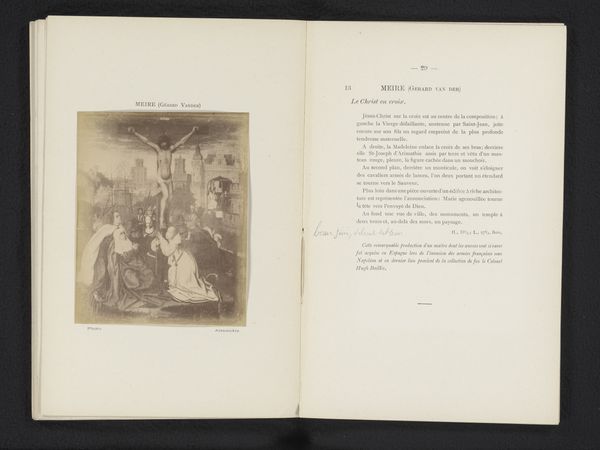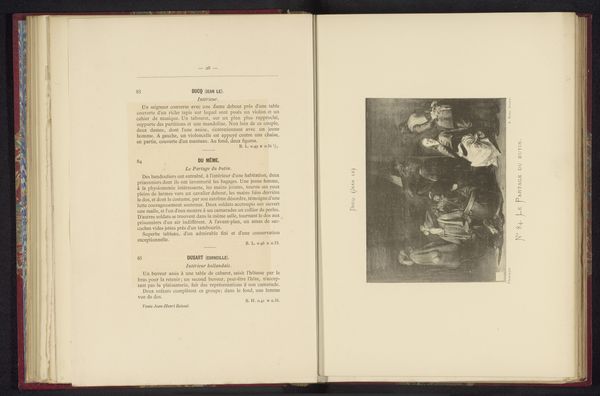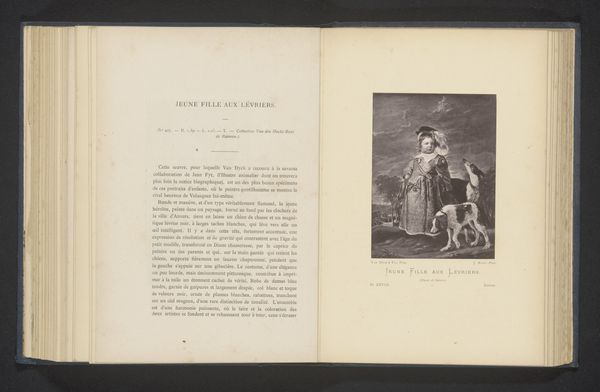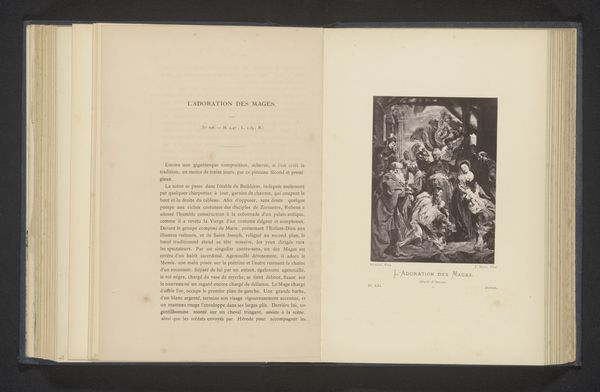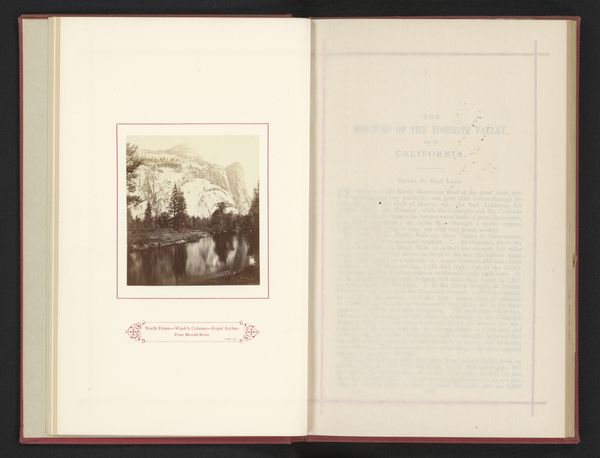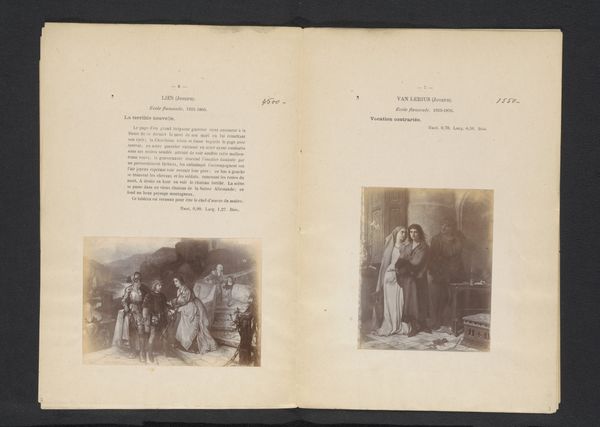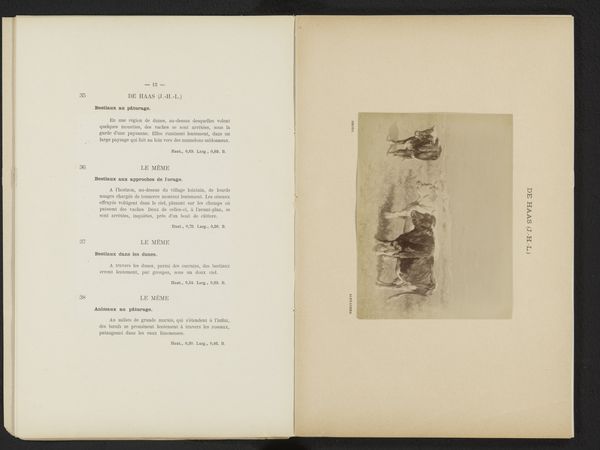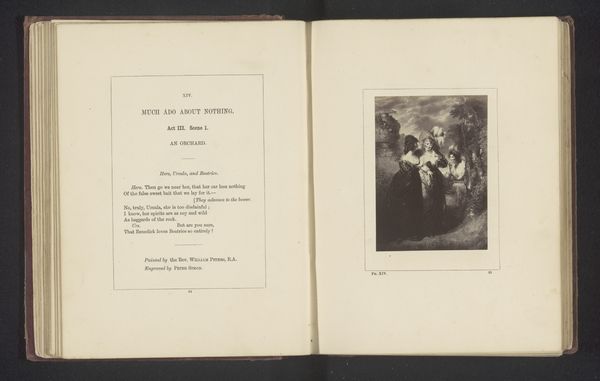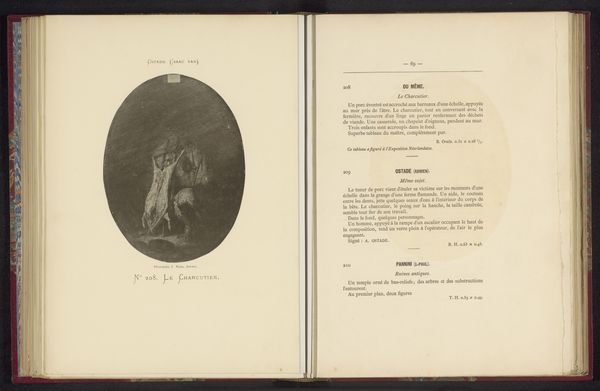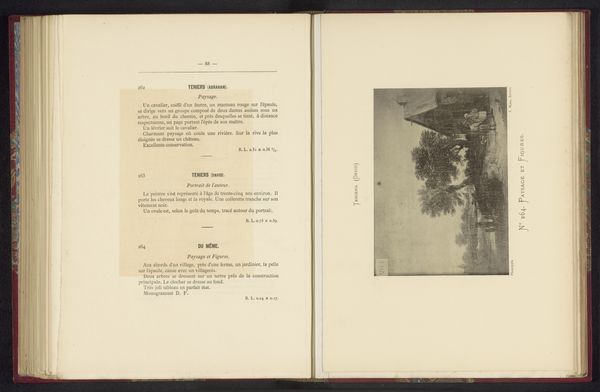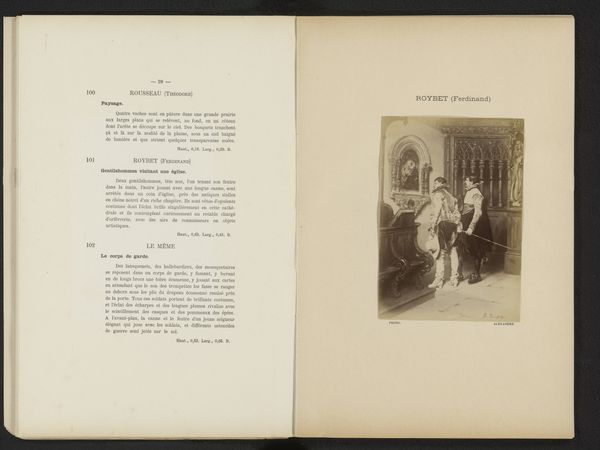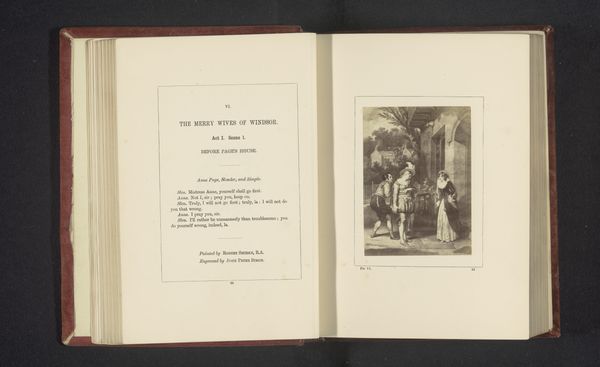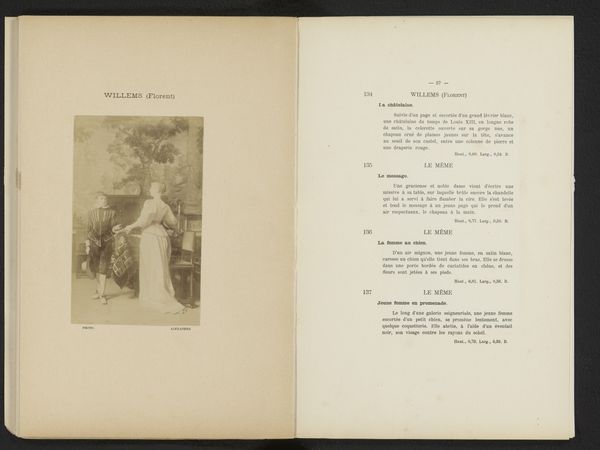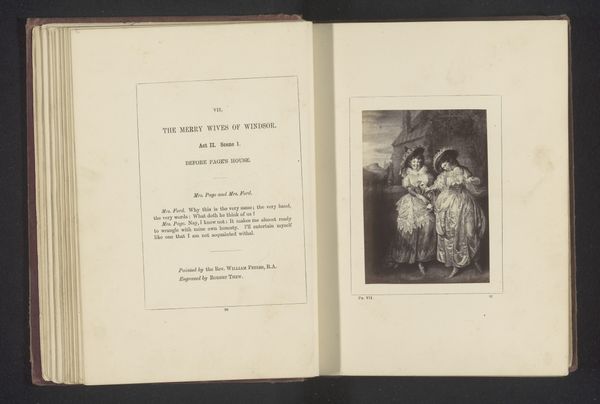
Fotoreproductie van Les carpes de Fontainebleau door Pierre-Charles Comte before 1893
0:00
0:00
Dimensions: height 142 mm, width 110 mm
Copyright: Rijks Museum: Open Domain
Curator: Here we have a photogravure reproduction of Pierre-Charles Comte's painting "Les carpes de Fontainebleau", likely produced before 1893. The photographer responsible for this image is listed as Alexandre. Editor: My immediate impression is one of restrained drama. The composition directs our eye upward, following the figures ascending the staircase, and the soft focus lends it an air of nostalgic grace. But what exactly is going on in this scene? Curator: It appears to be an outdoor social gathering, likely depicting members of the court during the French Renaissance. The clothing and the architectural setting certainly evoke that period. One sees this aesthetic as rooted in Romanticism, referencing a fascination with historical depictions and perhaps commenting on genre-painting trends. Looking closely, one might examine the physical process used by Alexandre to reproduce the piece. Editor: Absolutely, let’s think about that reproduction process. As a photogravure, the image wasn’t directly printed. The work and labor that went into creating this piece would include translating the artist's concept through another's—the photographer Alexandre in this instance—via intaglio printing to reproduce the painting as an artwork on paper. This allows the image to circulate as an art object, raising questions around accessibility and reproduction in a time of burgeoning image technologies. We should also consider how the subjects portrayed reinforce the idea of privilege—a particular segment of society able to enjoy such leisure in a meticulously designed landscape. Curator: Interesting points! It does speak volumes about the value systems in place, emphasizing the visual construction of power and leisurely refinement. It also challenges a distinction between painting and printed artwork, since a secondary labor-oriented reproductive technique enables wider distribution, which democratizes its consumption, even though that access remains very limited. This challenges assumptions regarding elitist fine art at this period. Editor: Yes, it allows for broader access while simultaneously preserving, perhaps even fetishizing, a vision of aristocratic life, reinforcing historical narratives and ideals around gender, class, and societal structures. That staged scene creates its own history within an historical work. The woman who appears to seek comforting glances elicits more reflection within this piece, perhaps more than Comte had envisioned originally in oil. Curator: So, in viewing this image—the photogravure by Alexandre after Pierre-Charles Comte—we recognize not just a reproduction, but a rich material and social object itself. It provides glimpses into art, technology, labor, and social life during the late nineteenth century. Editor: And as we examine this particular photogravure—this 'copy'—we’re also led to reflect on questions of power, representation, and social relations within the visual and material culture of the period.
Comments
No comments
Be the first to comment and join the conversation on the ultimate creative platform.
